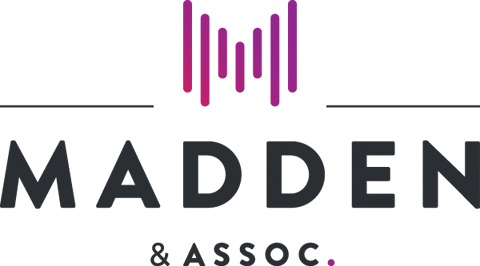The second Albanese Labor budget offered little substantive changes to the superannuation and wealth sectors, aside from rules ushering in payday payment of SG contributions for Australian employers. Madden senior consultant Nicki Bourlioufas has taken a look at the Budget in this report.
Budget revenue upgrade allows more spending, but super concessions wound back for wealthy
The Federal Government plans to introduce significant changes to superannuation taxation rules to limit concessions for the wealthy, but it has also boosted welfare payments to low income earners after announcing a budget deficit of $13.9 billion for 2023-24, revised significantly down from the previous estimate of $44 billion due to a stronger-than-expected economy and labour market.
A surplus of $4.2 billion is expected for 2022-23, which would be the first since 2007-08, putting Australia ahead than many other developed nations for its fiscal robustness. This financial year’s surplus would be a significant improvement from the Governments previous estimate of a $36.9 billion deficit in the October Budget, which has arisen due to stronger-than-expected economic growth and revenue and an upgrade to commodity price forecasts.
Key spending announcements announced in the Budget include ‘cost of living’ measures aimed at offsetting rising energy costs and a rise in welfare funding for single parents and jobseekers. Federal Treasurer Jim Chalmers is committed to ‘stage-three’ tax cuts, which are legislated to start from July 1 next year, and he has not budged from taxing more heavily superannuation earnings contributions made by Australian with more than $3 million in retirement savings.
Targeted superannuation concessions
The Federal Government is moving ahead with changes to better target tax concessions towards less wealthy households. Following on from a previously announced plan, earnings on very high superannuation balances will attract a higher rate of tax from 1 July 2025.
Australians with superannuation balances exceeding $3 million will pay tax on earnings at a rate of 30 per cent, higher than the current rate of 15 per cent, on the proportion of their savings exceeding $3 million. Earnings relating to assets below the $3 million threshold will continue to be taxed at 15 per cent, or 0 per cent if the savings are held in a retirement pension account. The measure applies to both SMSFs and APRA-regulated funds where individuals have a total superannuation balance (TSB) of more than $3 million. Where a person has more than one super account, for example, an account in a SMSF and an account in an APRA-regulated fund, the TSB is the combined value of both accounts.
Where an SMSF is shared between four members and only one member has a TSB more than $3 million, that person’s balance will not impact the other three members of the fund. According to Federal Government estimates, the changes are expected to apply to fewer than 80,000 people in 2025-26, “meaning that more than 99.5 per cent of individuals with a superannuation account will be unaffected.”
Also in superannuation, employers will be required to pay superannuation contributions at the same time as wages from 1 July 2026, in a measure designed to increase compliance with superannuation laws.
Personal taxation
Federal Treasurer Jim Chalmers did not announce any changes to stage three tax cuts, which are still planned for next year. From July 1, 2024, the 37 per cent tax rate bracket will be abolished. The 32.5 per cent rate will be lowered to 30 per cent and the threshold for the 45 per cent rate would be lifted by $20,000. That means anyone earning between $45,001 and $200,000 would pay the same tax rate.
No other changes were announced to personal taxation apart from the annual indexation of the Medicare Levy threshold, which ensures that low-income individuals continue to be exempt from paying the Medicare levy. This takes the family threshold above $40,000 for the first time, to $40,939 plus $3,760 for each dependent child, and the seniors threshold to $53,406, while the single threshold increases to $24,276.
Cost of Living Measures
As previously announced, low-income households will receive relief in the form of a deduction of up to $500 from their power bills from 1 July 2023. Eligible small businesses will receive a deduction of up to $650.
The Government will increase JobSeeker payments, Austudy and Youth Allowance by $40 per fortnight from September, which is expected to benefit around 1.1 million Australians. For people aged over 55 years currently on JobSeeker, they will receive an extra $92.10 a fortnight, matching the rate currently paid to people aged over 60 years.
Also from September, eligible single parents will receive the single rate of Parenting Payment until their youngest child turns 14, which is currently only paid until that child is 8 years old. The current base rate of Parenting Payment (Single) is $922.10 per fortnight, compared to the JobSeeker Payment base rate of $745.20 per fortnight.
Single parents moving to Parenting Payment (Single) will also benefit from more generous earning arrangements compared to JobSeeker. Eligible single parents with one child will be able to earn an extra $569.10 per fortnight, plus an extra $24.60 per additional child, before their payment stops. The maximum rates of Commonwealth Rent Assistance will also increase by 15 per cent, a measure that will assist a wide range of social security recipients.
Home ownership
The Federal Budget has expanded eligibility for the First Home Guarantee and Regional First Home Guarantee home purchase subsidies to any two eligible borrowers, including siblings and friends, beyond married and de facto couples. Australian Permanent Residents, in addition to Australian citizens, will also be eligible for the Home Guarantee Scheme, which allows homeowners to buy a home with a deposit as low as 5 per cent without paying lenders mortgage insurance. For existing homeowners, an extensive range of energy saving initiatives such as electrification, energy saving appliances and solar panels will be eligible for low-rate loans.

